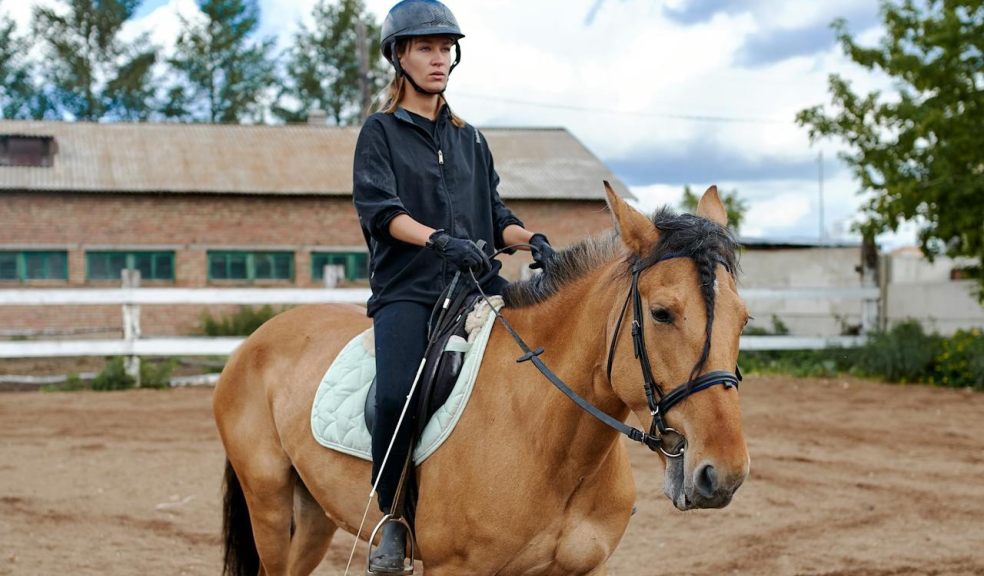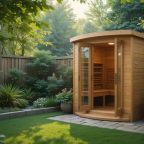
Basics of Horse Arena or Menage Construction
Are you considering building a horse arena or menage but feeling overwhelmed by the process? Look no further! This article will provide you with the basic knowledge and steps to successfully construct your own riding arena. Whether you're a beginner or an experienced equestrian, having a safe and functional arena is crucial for you and your horse's training. So, let's saddle up and dive into the basics of horse arena or menage construction.
What is a Horse Arena or Menage?
A horse arena, also known as a menage, is a designated space specifically designed for horse training and exercise. It is typically an enclosed area with a flat and level surface, allowing for various equestrian activities such as dressage, jumping, and lunging. The surface of the arena is carefully constructed using materials like sand, rubber, or a combination of both to provide optimal footing for the horses. A horse arena is an essential facility for equestrians to train their horses and improve their riding skills in a controlled and safe environment. With proper equestrian menage construction, a horse arena can help riders in their horsemanship journey.
What are the Benefits of Having a Horse Arena?
As a horse owner, you understand the significance of having a secure and dedicated area for riding and training your horse. This is where a horse arena, also referred to as a menage, becomes important. In this section, we will discuss the advantages of having a horse arena on your property. From offering a safe space for riding to enhancing your horse's performance and increasing the value of your property, a horse arena has numerous benefits. Let's delve into these advantages in more detail.
1. Provides a Safe and Dedicated Space for Riding
A horse arena provides a safe and dedicated space for riding, allowing for focused training and exercise. Here are the steps to consider when creating a horse arena:
- Select an appropriate location and determine the size needed for the arena.
- Ensure proper drainage and footing to maintain a safe and dry surface.
- Install sturdy fencing and secure gates for containment and safety.
- Add adequate lighting and shelter for year-round use.
To maintain the arena, regular grooming and dragging are necessary to keep the surface even. Proper watering and drainage help to prevent mud and maintain footing quality. Lastly, any damage or wear and tear should be promptly repaired to ensure a safe and functional space for riding.
2. Allows for Proper Training and Exercise
A horse arena provides a dedicated space for proper training and exercise, allowing both horse and rider to improve their skills and fitness. Here are the steps involved in utilizing a horse arena for training and exercise:
- Warm-up: Begin with a gentle warm-up to prepare the horse's muscles and joints for exercise.
- Groundwork: Engage in groundwork exercises such as lunging or long-lining to focus on obedience and flexibility.
- Riding Exercises: Practice various exercises like circles, transitions, and lateral movements to develop balance, responsiveness, and coordination.
- Jumping: Incorporate jumping exercises to enhance the horse's athleticism and agility.
- Conditioning: Include cardiovascular exercises like trotting and cantering to improve the horse's endurance and stamina.
- Cool-down: End the session with a relaxing cool-down, allowing the horse to gradually recover and stretch.
3. Can Improve Horse's Performance and Confidence
Improving a horse's performance and confidence is a key benefit of having a horse arena. Here are steps to achieve this:
- Provide a safe and dedicated space for riding, free from distractions and hazards.
- Design the arena with proper dimensions and footing to support various training exercises.
- Implement a diverse training programme, including groundwork, flatwork, and jumping exercises.
- Gradually introduce new challenges to build the horse's confidence, such as different obstacles or patterns.
- Use positive reinforcement and reward the horse for progress and effort.
By following these steps, a well-designed and maintained horse arena can greatly enhance a horse's performance and confidence.
4. Increases Property Value
Having a horse arena on your property can significantly increase its value. A well-maintained and properly constructed horse arena adds an attractive feature for potential buyers. It provides a dedicated space for horse riding, training, and exercise, which is highly desirable for equestrian enthusiasts. A horse arena also improves the horse's performance and confidence by providing a safe and controlled environment.
Factors to consider when constructing an arena include:
- Location
- Size
- Drainage
- Footing
- Fencing
- Lighting
Regular maintenance, such as grooming, watering, and repairing any damage, is essential to preserve the value of the horse arena and the property as a whole.
What are the Different Types of Horse Arenas?
When it comes to horse arenas, there are various types that cater to different needs and preferences. Each type offers its own advantages and considerations, making it important to understand the differences between them. In this section, we will discuss the three main types of horse arenas: outdoor, indoor, and covered arenas. By knowing the unique features and purposes of each, you can make an informed decision on which type of arena is best suited for you and your horse.
1. Outdoor Arenas
When constructing an outdoor horse arena, there are several important steps to follow:
- Site preparation: Clear the area of any debris, level the ground, and ensure proper drainage.
- Installing the base and footing: Lay a solid base layer of gravel or sand, followed by a layer of appropriate footing material such as sand, rubber, or fibre.
- Building the fence and gates: Install sturdy fencing around the arena perimeter, with secure gates for easy access.
- Adding lighting and shelter: Consider adding lighting for evening riding and providing shelter, such as a covered area, to protect both horses and riders from the elements.
Following these steps will help create a well-functioning and safe outdoor horse arena.
2. Indoor Arenas
Indoor arenas offer numerous advantages for horse riding and training. Here are the key benefits of having an indoor arena:
- Protection from the weather, enabling year-round riding and training.
- Controlled environment for consistent footing and lighting conditions.
- Privacy and reduced distractions for focused training sessions.
- Ability to host events, clinics, and competitions regardless of weather conditions.
- Prolonged lifespan of footing and equipment due to reduced exposure to outdoor elements.
3. Covered Arenas
Covered arenas offer several advantages for horse owners and riders. Here are the steps involved in constructing a covered arena:
- Choose a suitable location and determine the ideal size for the arena.
- Ensure proper drainage and select appropriate footing material for optimal horse performance and safety.
- Install durable fencing and gates to enclose the arena securely.
- Add sufficient lighting to allow for evening or indoor riding.
- Provide shelter to protect horses and riders from inclement weather.
By following these steps, you can create a functional and comfortable covered arena that allows for year-round riding and training.
What Factors Should Be Considered When Constructing a Horse Arena?
When it comes to constructing a horse arena, there are several important factors to consider in order to create a safe and functional space for both horse and rider. From the location and size of the arena to the type of footing and fencing used, each decision plays a crucial role in the overall construction. In this section, we will discuss the key considerations that should be taken into account when building a horse arena, including the importance of proper drainage, fencing, lighting, and shelter.
1. Location and Size
When considering the location and size of a horse arena or menage, several factors should be taken into account to ensure its effectiveness and functionality.
- Choose a location that is easily accessible and has sufficient space for the arena.
- Consider the size of the arena based on the intended use, such as training, exercise, or competition.
- Ensure that the location is level and free from obstructions to provide a safe riding environment.
- Take into consideration the surrounding landscape and vegetation to minimize potential distractions or hazards.
- Consult with professionals, such as architects or equestrian experts, to determine the optimal dimensions for the arena based on the available space.
- Consider local regulations and zoning restrictions that may affect the size and location of the arena.
2. Drainage and Footing
Proper drainage and footing are crucial factors to consider when constructing a horse arena. Here are important steps to achieve it:
- Assess the natural slope of the land and ensure adequate drainage.
- Install a drainage system, such as French drains, to prevent water accumulation.
- Select suitable footing materials, such as sand, rubber, or a mix, for optimal traction and shock absorption.
- Level the surface with grading equipment to ensure even footing.
- Compact and stabilize the footing to prevent erosion and maintain consistency.
- Regularly maintain the arena by removing debris, watering, and dragging to keep the footing in good condition.
By following these steps, you can create a horse arena with proper drainage and footing, providing a safe and comfortable space for horse riding and training.
3. Fencing and Gates
When it comes to constructing a horse arena, fencing and gates play a crucial role in ensuring safety and security for both horses and riders. Here are some key steps to consider for fencing and gates:
- Choose the right materials: Opt for sturdy and durable fencing materials such as wood, PVC, or high-tensile wire.
- Determine the height: Ensure that the fencing is tall enough to prevent horses from jumping over or getting tangled.
- Consider gate placement: Strategically place gates to allow easy access to the arena while maintaining security.
- Add latches and locks: Install secure latches and locks on gates to prevent horses from escaping.
- Maintain regular inspections: Regularly inspect fencing and gates for any damages or weak spots, and repair or replace as needed.
By following these steps, you can create a safe and functional horse arena with proper fencing and gates.
4. Lighting and Shelter
Proper lighting and shelter are crucial elements of a well-designed horse arena. Follow these steps when adding lighting and shelter to your arena construction:
- Evaluate your lighting requirements based on the location and intended use of the arena.
- Select suitable lighting fixtures that offer adequate visibility and minimise shadows.
- Strategically install lighting poles or fixtures to ensure consistent illumination throughout the arena.
- Consider using energy-efficient LED lights to reduce electricity expenses.
- For shelter, decide whether a permanent structure or portable options like shade sails or canopies are needed.
- Ensure that the shelter provides sufficient protection from the elements, including rain, sun, and wind.
- Consider incorporating features such as fans or misting systems to keep the arena cool during hot weather.
By implementing proper lighting and shelter, you can create a safe and comfortable environment for both the rider and the horse in your horse arena.
What Are the Steps for Building a Horse Arena?
Building a horse arena can be a complex process, but it is essential to create a safe and functional space for both horses and riders. In this section, we will discuss the required steps for building a horse arena. Starting from site preparation to the installation of necessary elements, we will cover each stage of the construction process. By the end, you will have a complete understanding of what it takes to construct a high-quality horse arena. Let's begin!
1. Site Preparation
Before constructing a horse arena, proper site preparation is crucial to ensure a solid foundation. Here are the essential steps to follow:
- Clear the site: Remove any existing vegetation or debris from the area.
- Level the ground: Use heavy machinery to grade and level the site, ensuring a flat surface.
- Address drainage: Install appropriate drainage systems to prevent water accumulation and ensure proper water runoff.
- Consider soil composition: Conduct a soil test to determine its composition and make any necessary amendments.
- Compact the soil: Use compacting machinery to achieve a firm and stable base.
By thoroughly preparing the site, you can lay the groundwork for a successful horse arena construction project.
2. Installing the Base and Footing
Installing the base and footing for a horse arena is a crucial step in its construction. This process ensures a solid and stable foundation for the arena, which is essential for the safety and performance of both horses and riders. Here is a step-by-step guide to installing the base and footing:
- Prepare the site by clearing the area of any vegetation, rocks, or debris.
- Grade the site to ensure proper drainage and a level surface.
- Compact the sub-base layer using heavy machinery to create a stable foundation.
- Add a layer of geotextile fabric to prevent mixing of the sub-base and footing materials.
- Spread a layer of suitable footing material, such as sand or a sand-rubber mixture.
- Level and compact the footing material to achieve the desired consistency and thickness.
- Water the footing regularly to maintain moisture and prevent dust.
By following these steps, you can ensure that your horse arena has a solid and durable base and footing, providing a safe and comfortable surface for riding and training.
3. Building the Fence and Gates
Building the fence and gates for a horse arena is a crucial step in ensuring the safety and functionality of the space. Here is a list of steps to follow when constructing the fence and gates:
- Determine the layout and dimensions of the fence and gates based on the size and shape of the arena.
- Choose the appropriate materials for the fence, such as wood or PVC, considering durability and visibility.
- Install sturdy posts at regular intervals around the perimeter of the arena.
- Attach the fencing material securely to the posts, ensuring there are no gaps or loose sections.
- Include a gate or multiple gates for easy access to the arena.
- Select gate hardware that is strong, reliable, and easy to operate, such as hinges and latches.
- Perform regular inspections and maintenance to ensure the fence and gates are in good condition, repairing any damages or wear and tear.
4. Adding Lighting and Shelter
To add lighting and shelter to a horse arena, follow these steps:
- Assess lighting needs: Determine the amount and type of lighting required for the arena, considering factors like size, usage, and local regulations.
- Select lighting fixtures: Choose appropriate lighting fixtures, such as floodlights or LED lights, that provide adequate illumination for riding and training activities.
- Install lighting system: Hire a professional electrician to install and wire the lighting system, ensuring compliance with safety standards and local building codes.
- Design and construct shelter: Determine the type and size of shelter needed, whether it's a simple roof structure or a fully enclosed barn. Take into account the number of horses and riders, as well as the climate and weather conditions in the area.
- Build the shelter: Engage a reputable contractor to construct the shelter, ensuring it is durable, properly ventilated, and provides sufficient protection from the elements.
- Provide adequate drainage: Ensure that the area around the shelter has proper drainage to prevent water accumulation and maintain a dry and comfortable environment for the horses.
How to Maintain a Horse Arena?
As a horse owner, it is important to maintain a safe and functional riding arena for the well-being of your horse. In this section, we will discuss the essential steps to properly maintain a horse arena. This includes regular grooming and dragging, as well as ensuring proper watering and drainage. We will cover the necessary tasks to keep your arena in good condition. Moreover, we will emphasize the significance of repairing any damage or wear and tear to ensure a safe and comfortable riding experience for both you and your horse.
1. Regular Grooming and Dragging
Regular grooming and dragging are essential for maintaining a horse arena and ensuring optimal riding conditions. Here are the steps involved in this process:
- Remove debris: Clear the arena of any debris, such as rocks, sticks, or manure.
- Level the surface: Drag the arena to even out any uneven spots and create a smooth surface.
- Break up compacted areas: Use a harrow or drag to break up compacted areas and prevent the formation of hard spots.
- Distribute materials: Spread materials like sand, rubber, or fibre evenly across the arena surface to maintain proper footing.
- Groom the edges: Pay attention to the edges of the arena, ensuring they are well-maintained and free from overgrown grass or weeds.
- Water the arena: Adequate watering is important to control dust and maintain proper footing. Watering should be done regularly.
2. Proper Watering and Drainage
Proper watering and drainage are essential for maintaining a horse arena in optimal condition. Here are the steps to ensure effective water management and drainage:
- Inspect the arena regularly, looking for areas with poor drainage or standing water.
- Install a proper drainage system, such as French drains or channels, to prevent water accumulation.
- Grade the arena surface to promote water flow and prevent pooling.
- Water the arena evenly and regularly to keep the footing moist and prevent dust.
- Use sprinklers or water trucks to distribute water evenly across the arena.
- Avoid overwatering, as it can create muddy conditions.
- Monitor the drainage system to ensure it is functioning effectively.
- Repair any damage to the drainage system or arena surface promptly to prevent further issues.
- Consider using additives, like organic materials or fibers, in the footing to improve water retention and drainage.
With proper watering and drainage, your horse arena will provide a safe and comfortable space for riding and training.
3. Repairing Any Damage or Wear and Tear
To properly maintain a horse arena and ensure its longevity, it's crucial to address any damage or wear and tear promptly. Here are some essential steps to follow:
- Regular inspections: Regularly assess the condition of the arena to identify any signs of damage or wear.
- Repair small cracks and holes: Fill in small cracks and holes in the arena surface to prevent them from worsening.
- Level uneven areas: Use appropriate tools to level any uneven spots in the arena, ensuring a safe and even surface for riding.
- Replace worn-out footing: If the footing in the arena is worn out, consider replacing it to maintain optimal traction and cushioning for the horses.
- Address drainage issues: Ensure proper drainage to prevent water accumulation and potential damage to the arena surface.
- Regular maintenance: Implement a regular maintenance routine that includes grooming, dragging, and watering the arena to keep it in good condition.

















